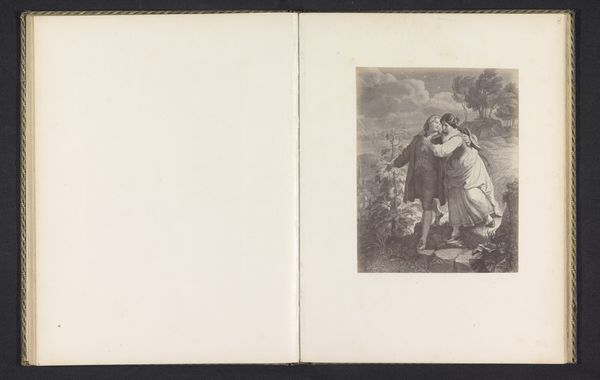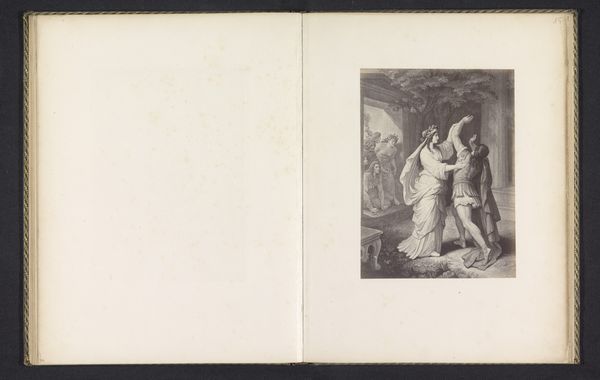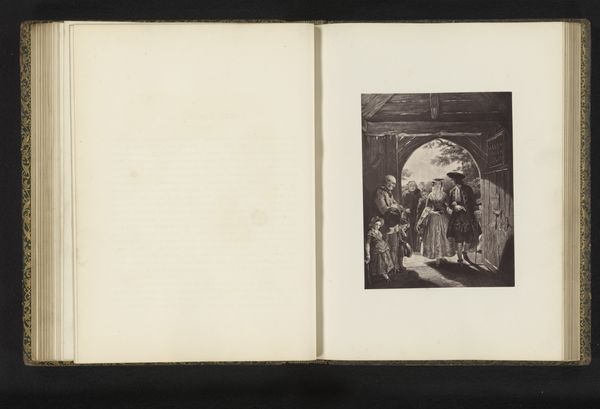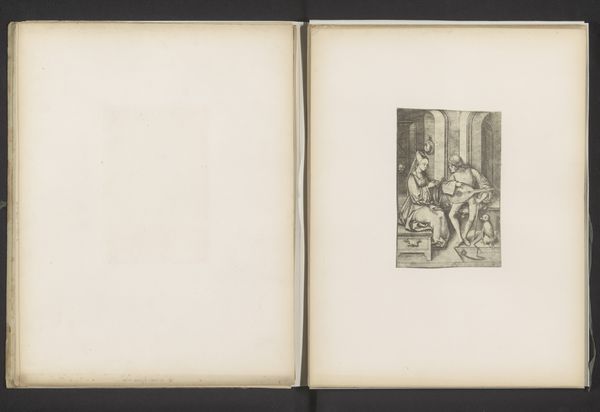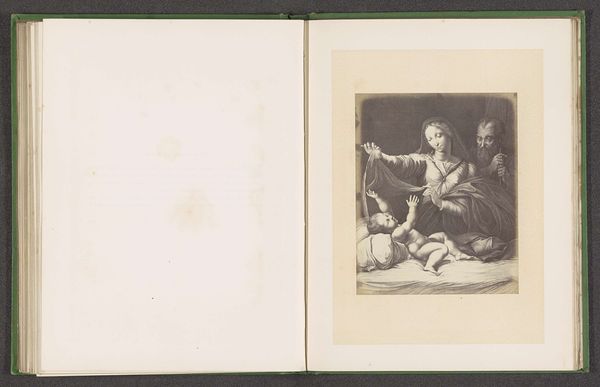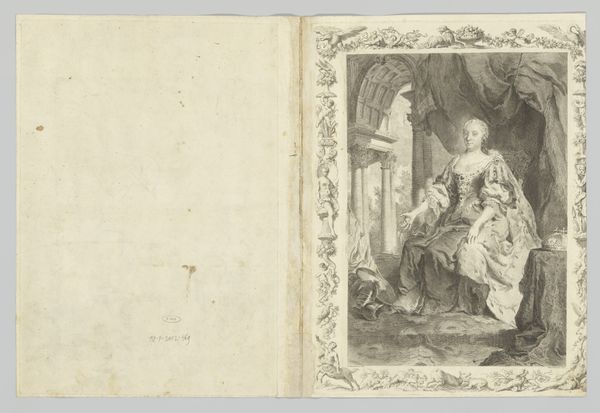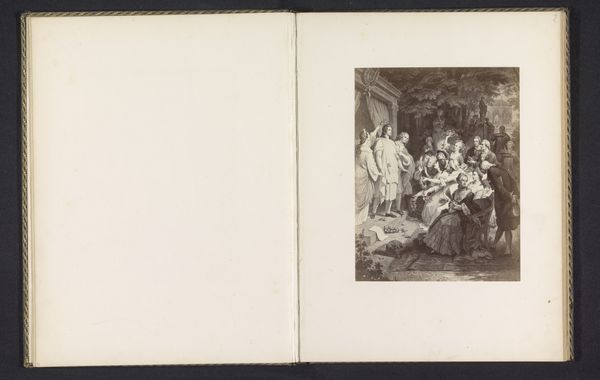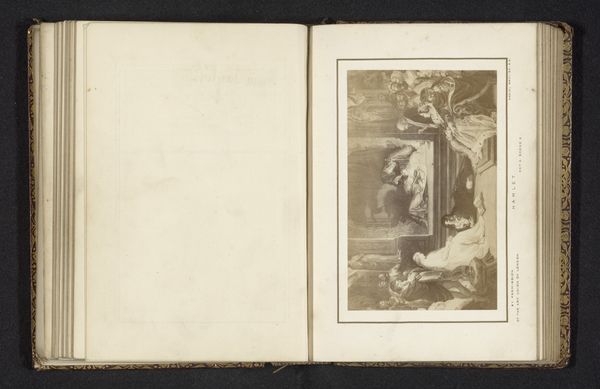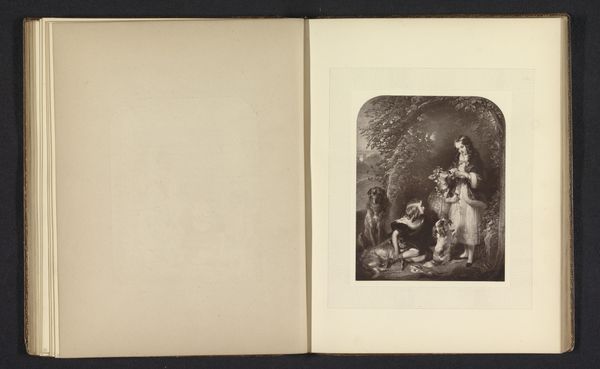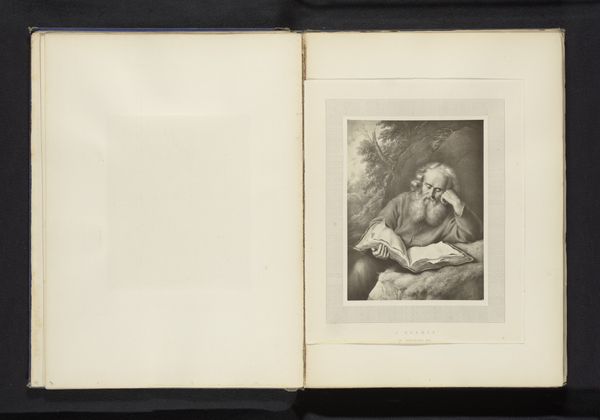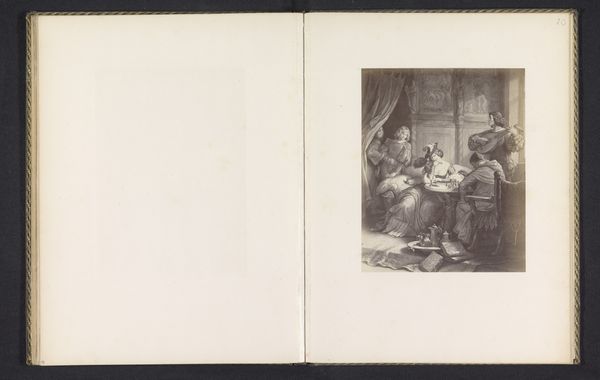
Fotoreproductie van een prent van een scene uit Faust, voorstellende Gretchen voor een sculptuur van de Piëta c. 1875 - 1885
0:00
0:00
anonymous
Rijksmuseum
Dimensions: height 178 mm, width 140 mm
Copyright: Rijks Museum: Open Domain
Curator: My god, look at the overwhelming grief. It leaps right out. Editor: Indeed. What we’re looking at is a photo reproduction of an etching, dating back to somewhere between 1875 and 1885. It's entitled "Fotoreproductie van een prent van een scene uit Faust, voorstellende Gretchen voor een sculptuur van de Pietà." A mouthful, I know, but it essentially depicts a scene from Goethe's Faust. Curator: Gretchen at the Pietà. So it’s referencing Michelangelo’s iconic sculpture while simultaneously diving headfirst into romantic drama, as etched angst. You’ve got her slumped, prostrate, this really intense vulnerability on display… the gossiping onlookers feel almost predatory. Editor: Precisely! It really leans into that Romantic aesthetic. It’s an image of public shame and intimate grief all rolled into one potent visual statement, reflective of the romanticism movement, which frequently uses emotive scenes rooted in both genre and history paintings. Curator: It is powerful, I can just imagine Goethe being very dramatic! I wonder about that Pietà, that statue within the picture, how deliberate is it being to cast her as a sorrowful figure in the tradition of the mourning of Christ. Is it empathetic or... well, piling it on? Editor: I see it as less about piling on and more about leveraging that artistic heritage for emotional depth. Think of how religious imagery was being reinterpreted at the time, not just as symbols of faith but as vehicles for intense, personal feelings. This scene plays to the melodramatic conventions and artistic movements prevalent in Europe at that time. Curator: I guess for a modern eye there's something maybe a bit overwrought. That drama of the hand-wringing. But the fact that it's been reproduced says a lot - clearly it resonated with viewers in that period. Editor: Yes, mass reproduction through etching, which by this period had reached a technological maturity. To be reproducible made it available across a broader public audience, ensuring its visual imagery impacted many. A window into the culture that adored it, perhaps! Curator: Food for thought! It is intriguing how accessible such raw emotions were through mass-produced art, and in reverse how such accessible emotions are viewed now. Editor: Exactly. Each viewing becomes its own new historical reading!
Comments
No comments
Be the first to comment and join the conversation on the ultimate creative platform.
